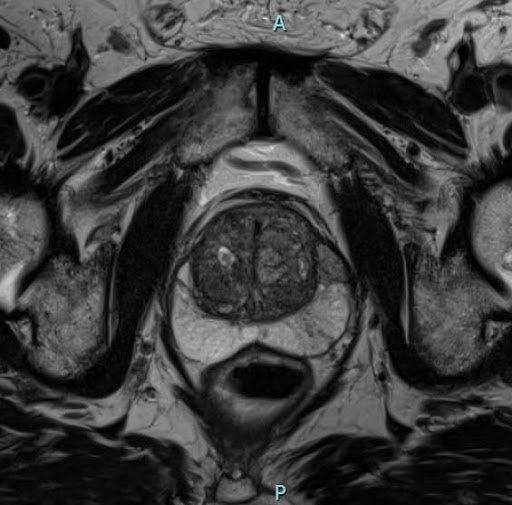BACKGROUND
Colorectal cancer (CRC) is a type of cancer that originates in either the large intestine (colon) or the rectum. CRC is the 3rd most commonly diagnosed cancer in the United States, but one of the most treatable. Early detection is key to treatment, as there is a high chance of prevention by removing premalignant polyps and a possible cure if the cancer is confined to the colon.
According to a 2023 report by the American Cancer Society, there are 106,970 new cases of colon cancer and 46,050 new cases of rectal cancer in the United States each year. Individuals over 50 years old are at the highest risk of developing colorectal cancer (CRC). On average, women are diagnosed with CRC at the age of 75, while men are diagnosed at the age of 72.
However, there has been a recent rise in CRC cases in people under 50 years old, representing 11% of colon cancer cases and 15% of rectal cancer cases. This has prompted both the American Cancer Society and the United States Preventative Services Task Force (USPSTF) to recommend that routine screening for CRC begin at age 45 for all adults.
When caught early, colorectal cancer can be treated with a higher likelihood of success. Unfortunately, many cases of colon cancer are asymptomatic and go undetected until they reach a later stage. Around 60% to 70% of cases in symptomatic patients are diagnosed at an advanced stage, making them much harder to treat.
For this reason, several methods of CRC screening have been developed that are able to detect early-stage tumors while they are still highly treatable. Some of these methods include:
Colonoscopy: a thin, flexible endoscope is inserted into the rectum while the patient is under a type of anesthesia called conscious sedation. The entire colon is inspected for polyps: if a polyp is found, it can be biopsied or removed immediately.
Sigmoidoscopy: similar to a colonoscopy, a sigmoidoscope is used to inspect the rectum and only part of the colon. Not commonly used in the United States.
Stool Tests: tumors in the colon often release tiny amounts of blood and/or abnormal DNA into the fecal matter. A stool sample can be tested for these abnormalities. These tests are more expensive than CTC and have a much higher false positive rate.
CT Colonography: a radiologic imaging technology, computed tomography (aka “CT”) can be used to generate a detailed 3D digital image of the colon and the abdomen. This image can be examined by trained radiologists to detect suspicious polyps. This method does not require IV contrast or IV medications.
Screening for Colorectal Cancer
Traditionally, colonoscopy has been the mainstay of screening for colorectal cancer. Although colonoscopy is a sensitive screening test with the ability to detect very small polyps, it is also an invasive test that requires anesthesia and a downtime/recovery period of up to a week.
More recently, a technique called CT colonography (also known as “virtual colonoscopy”) has been developed as a less invasive method of CRC screening. CT colonography (CTC), is a radiographic imaging technique that uses X-rays and computer algorithms to create detailed 3D digital images of the air-filled colon and rectum. Per the findings of a 2007 study, it has been determined that CT colonoscopy is on par with traditional colonoscopy when it comes to detecting polyps greater than 1cm in size.
CT colonscopy does not require IV contrast, IV medications, or anesthesia, and you are able to drive yourself to and from your screening appointment.
You may be referred by your doctor for CT colonography if you:
Are 45 years of age (or older) and at average risk for colorectal cancer (no personal or family history of either CRC or other abnormal polyps)
Are unable to undergo traditional colonoscopy (i.e., due to technical difficulty, the procedure is contraindicated, or if you are unable to tolerate the procedure)
There are certain patients for whom CT colonography is not recommended. This may apply to you if you have:
A personal history of previous adenomas or other suspicious polyps (as these may require a biopsy for surveillance)
Active inflammatory bowel disease (active inflammation may interfere with the identification of CRC on imaging)
Family history of CRC (traditional colonoscopy is generally preferred if you are at above-average risk)
The bowel preparation for CT colonography is very similar to that required for traditional colonoscopy. As described in this article, preparation to cleanse the colon begins the evening before the appointment. A combination of laxative pills and liquid laxatives must be consumed, prompting several trips to the restroom. Although this process may seem like a chore, it is an extremely important step that enables the ability to obtain accurate, high-quality screening images of your colon.
Bowel prep pre-procedure is so essential because the residual fecal matter in the colon can either obscure existing polyps (resulting in a false negative) or may mimic a polyp that isn’t actually there (false positive). In the event that a suspicious lesion is identified on CT colonography imaging, you will be referred for follow-up with a traditional colonoscopy. This will allow for a tissue biopsy or removal of the lesion, which will be inspected under a microscope for cancerous cells.
What to expect
Before the exam
Prior to the exam, your doctor may suggest that you only consume clear liquids within the 24 hours leading up to the exam. Additionally, a laxative is recommended for adequate bowel preparation leading up to your exam. As mentioned previously, any residual stool in the colon may either obscure existing polyps or mimic polyps that do not exist.
During the exam
A thin, flexible catheter will be inserted into the rectum, and air or carbon dioxide (CO2) is introduced. This will distend the bowel and make the contours of the colon more visible on imaging. This process may cause some cramping, which is typically mild and resolves soon after the exam.
When images are ready to be taken, you will be lying on your back on the CT scanner table. You will be asked to hold your breath for approximately 30 seconds in order to minimize motion that can distort the final image. You may also be asked to repeat the images while lying on your stomach, on your side, or both. The purpose of this is to shift any residual bowel contents into different positions (due to gravity).
Conclusion
CT colonography is a valuable screening tool for colorectal cancer. With high sensitivity, convenience, and safety, CT colonography can help you take control of your health and detect colorectal cancer early.
Since it is a less invasive alternative to traditional colonoscopy, it can be useful for patients in need of early detection of cancerous and precancerous lesions. The sooner the abnormality is identified, the more quickly treatment can begin.
Radiology Associates utilizes the latest imaging technology, including state-of-the-art 3D CT scanners and specialized software, to capture detailed images of the colon and rectum. These images are then reviewed by our team of expert radiologists who are trained to identify any abnormalities or precancerous growths.
References
https://acsjournals.onlinelibrary.wiley.com/doi/10.3322/caac.21772
https://www.cancer.org/cancer/colon-rectal-cancer/about/key-statistics.html
https://www.radiologyassociatesimaging.com/news-and-views/2021/11/30/new-guidance-for-colorectal-cancer-screening
https://www.ncbi.nlm.nih.gov/pmc/articles/PMC4945785/
https://www.uspreventiveservicestaskforce.org/uspstf/recommendation/colorectal-cancer-screening
https://www.ncbi.nlm.nih.gov/pmc/articles/PMC9191267/
https://evidencemd.net/sites/default/files/Evaluating-Benefits-Harms-Colorectal-Cancer-Screening-Strategies.pdf
https://www.ncbi.nlm.nih.gov/pmc/articles/PMC5493310/
https://www.whittington.nhs.uk/default.asp?c=42754
https://www.ncbi.nlm.nih.gov/pmc/articles/PMC3104149/
https://www.radiologyassociatesimaging.com/news-and-views/2022/3/17/why-everyone-should-get-screened-for-colon-cancer-at-45
https://www.uptodate.com/contents/screening-for-colorectal-cancer-beyond-the-basics#H4053849






